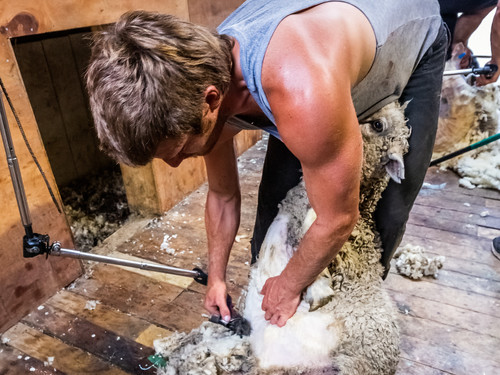Mate pokohiwi māori noa
Common Shoulder Conditions
How important is it to diagnose shoulder pain?
Shoulder pain may be related to a specific injury or accident, or develop slowly over time. Diagnosing what causes the pain in terms of the anatomical tissue is particularly important after trauma or an accident.
If you have had an accident, fracture, or dislocation, you should attend to an Urgent Doctor or a Hospital Accident & Emergency unit (A&E) to receive the required care and instructions for the immediate phase. That may include using a sling, medical care or considering surgery.
For most other shoulder injuries and pain, diagnosis can be difficult. That is because usual movement, training, repetitive movement at work and also growing older normally lead to changes in the tissues. For example, people without shoulder pain can have partial or full tears in their rotator cuff tendon without knowing it and without the tears inteferring with their usual function. Some athletes have thickened bursae without having pain. In those scenarios it is difficult to decide whether changes we may see in the joints, cartilage, tendons or bursae (on X-ray, ultrasound imaging or MRI) are actually the cause of the pain.
To guide treatment, shoulder pain may be divided into the following categories
Painful shoulder
Stiff shoulder
Loose shoulder
‘Other’ shoulder conditions.
Painful shoulder
Rotator cuff related shoulder pain
Rotator cuff problems are one of the most common causes of shoulder pain, particularly around middle age and older people. The pain may develop gradually. It may also happen due to an accident or injury. In younger people, it is more commonly related to the amount or way they are using the arm, for example, during work, recreation or sports.
Rotator cuff problems have also been called a ‘bursitis’, ‘tendinitis’, ‘impingement’, or subacromial pain. But it is rarely possible to pinpoint the cause of this pain to a specific anatomical structure. We also know that actual ‘impingement’ or pinching of the tendon is unlikely to occur. Because we do not always know exactly what is causing the pain, it is best to use the term ‘rotator cuff related shoulder pain’. That is a generic term that may or may not include tears in the tendon or muscle, or inflammation of the bursa.
If you have rotator cuff related shoulder pain, you may experience the following:
Pain deep in the shoulder or in the upper arm when lifting the arm away from your body, when getting dressed (for example taking off a t-shirt, putting the arm through a sleeve, tucking in the shirt, or fastening the bra at the back), when carrying objects, or when fastening a seat belt in the car.
The pain may be mild and come on during very specific movements only, or be variable in severity and may, at times, also keep you awake at night.
Your shoulder may feel weak during specific movements.
Your shoulder movements are unlikely to be stiff.
If you suspect that you have rotator cuff related shoulder pain, you should consult with a physiotherapist or your GP. The physiotherapist will help you decide whether and when the GP assessment is needed.
Stiff or tight shoulder
Frozen shoulder
A frozen shoulder may cause severe pain and stiffness in the shoulder and is often described as having two phases: (1) pain is worse than stiffness, (2) stiffness is worse than pain. The shoulder capsule becomes inflamed, thickens and tightens, then slowly recovers and movement returns. We often do not know exactly why people develop a frozen shoulder. On occasion, the condition can develop following surgery or an injury. It most commonly affects people between 35 and 60 years old, and it appears to be more common in people living with diabetes or thyroid disorders. Recovery can be slow and may be one or more years. In people also living with diabetes or thyroid disorders, it may take longer to recover.
If you have a frozen shoulder, you may experience the following:
In the early stage, pain is usually a bigger issue than stiffness. The pain initially may be severe enough to interfere with your usual daily tasks.
Shoulder pain also at night, particularly when lying on the shoulder.
With time, the pain usually decreases and stiffness of the shoulder may become a bigger issue than the pain.
Sometimes people who have had a frozen shoulder on one side later experience the pain on the other side.
If you suspect that you have a frozen shoulder, you should consult with your GP to check if there are any reasons that have led to the condition. The GP will discuss whether an X-ray, ultrasound or other investigation is needed, mainly to exclude other reasons for the pain. You can also consult with a physiotherapist if you suspect that you may have a frozen shoulder. The physiotherapist can assess you and provide advice about treatment. They will consider strategies with you (and your whānau) to cope with the pain, how to remain as active as possible, and how to best look after your overall health and well-being. The physiotherapist can also provide advice about how to deal with the pain at work.
Shoulder osteoarthritis
As for the hip and knee joints, osteoarthritis can also occur in the shoulder. Osteoarthritis is the result of a joint trying to heal itself, leading to changes that may or may not be painful. This may be due to shoulder injury earlier in life and is more common with older age. Exercise can be very helpful in the management of osteoarthritis.
If you have shoulder osteoarthritis, you may experience the following:
Shoulder pain during specific movements and/or at rest
Pain at night, particularly when lying on the side
Increasing stiffness of the shoulder that may start to influence your daily life, work or physical activity.
If you suspect that you have shoulder osteoarthritis, you should consult with a physiotherapist or your GP. The physiotherapist can help you decide whether and when the GP assessment is needed. They will make suggestions for the need to refer for X-rays or other investigations. The physiotherapist will discuss an exercise programme with you to keep you active and how to best take care of your general health and well-being.
Loose shoulder
A 'loose' shoulder may be due to a dislocation or subluxation, or due to instability or increased flexibility.
Dislocated or subluxed shoulder
Shoulder dislocation and subluxations are usually due to an injury or accident, for example due to a fall. They are very common in contact sports.
If you have dislocated or subluxed your shoulder the following will apply:
Most likely happened during an injury or accident
Clearly felt the shoulder dislocating (popping)
A visible lump at the front of your shoulder (where the shoulder head has dislocated forwards), the shoulder feeling as though it is hanging loosely, or a slight lump at the back of the shoulder (when dislocated backwards).
For a subluxation the shoulder popped back in by itself. For dislocation, it is stuck in that position and needs to be put back in place by a clinician.
Likely to have moderate to severe pain in the shoulder, with increasing shoulder muscle tightness.
If you suspect that your shoulder has dislocated and is stuck in that position, you should attend A&E at a hospital or Urgent Doctors. Specialised care is needed to put the shoulder back into place. An X-ray and other investigations should be undertaken to check if there has been a fracture or other injury.
If you suspect that your shoulder had subluxed (the shoulder had dislocated but moved back into place by itself), you should still see your GP and/or physiotherapist. They will help you decide whether investigations and other referrals are needed.
First line care is usually using a sling and starting with rehabilitation with a physiotherapist. If the shoulder keeps on dislocating, the GP may refer you to an orthopaedic surgeon to consider surgery.
Instability or increased flexibility
A ‘loose’ shoulder can be due to:
an instability (increased mobility) following an injury:
or due to general hypermobility or flexibility, often without having had an injury.
If you have shoulder instability, you may experience the following:
You may or may not have had an injury to the shoulder
You may feel pain deep in the shoulder, particularly when doing more activity or when increasing sports training
There may be clicking in the shoulder, and occasionally feel weak
You may experience occasional subluxations without full dislocations.
Increased flexibility (hypermobility) may be only in the shoulder (or both shoulders) or in most joints of the body. This increased flexibility may be ‘normal’ for you, or in some cases may also be associated with general connective tissue conditions.
If you suspect that your shoulder is unstable or if you are concerned about a hypermobile shoulder, you should consult a physiotherapist or your GP. The first line care would be rehabilitative exercises.
Other shoulder conditions
Fractures
Different fractures are possible for the shoulder blade, collarbone and upper arm bone, usually due to a fall or other specific injury or accident. If you suspect a fracture, you should attend A&E (a hospital Accident & Emergency Unit) or Urgent Doctors.
Acromioclavicular joint pain
This joint is at the tip of the shoulder, between the tip of the shoulder blade (acromion) and the collar bone (clavicle). It can be injured by falling directly onto the shoulder, for example when falling off a mountain bike, during a skiing fall, or a contact sport injury. Acromioclavicular joint pain may also be chronic/persistent, as a result of past injuries.
If you suspect that you have an acromioclaviular joint injury you may experience the following:
Pain at the tip (side) of the shoulder
All shoulder movements are painful
There may be a visible ‘lump’ on the top of the shoulder if the ligaments and capsule are injured more severely as the head of the collarbone may be protruding from the acromion (tip of the shoulder blade).
Sternal-clavicular pain
This joint is at the top of the chest, where the collarbone (clavicle) meets the breastbone (sternum). An injury of this joint is not common but can occur when there is a force directly to that area of the body, for example being hit by another player during a rugby game.
Nerve injuries
There are a number of nerves that supply the shoulder. These can be injured (for example, if there is also a fracture), or present with symptoms due to other reasons (eg a ganglion or cyst developing on the nerve).
If you suspect that you have a nerve injury you may experience:
Pain in the area supplied by the nerve
Pins and needles
Loss of sensation to the skin that is supplied by the nerve
Weakness of specific muscles supplied by the nerve.
If you suspect a nerve injury, you should consult with your GP who may send you for further investigations to confirm the injury. Pain and other symptoms related to nerve injuries usually take time to recover.
Shoulder pain referred from the neck or upper back
Pain in the shoulder may also be due to a condition of the neck or upper back – called referred pain. In this case, it is most likely that there will also be pain in the neck or upper back. A GP or physiotherapist should assess you to determine whether the pain is most likely arising from the neck or uppper back. They will also discuss with you what the appropriate treatment may entail and what you can do take care of the pain.




